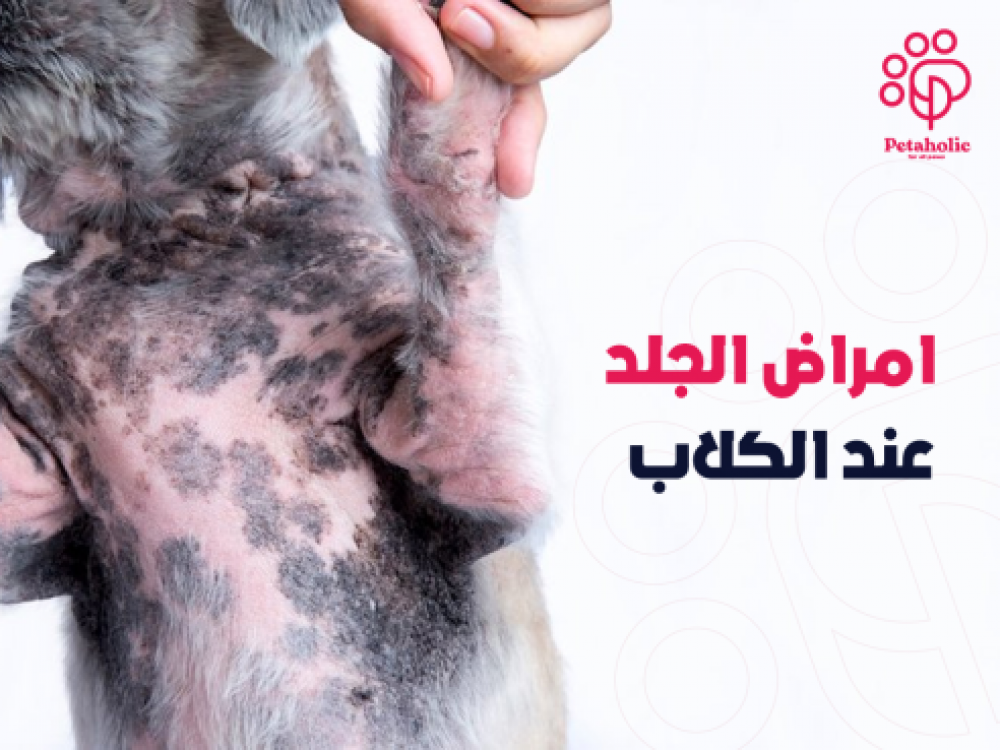
Skin diseases in dogs are among the most common reasons why owners take their dogs to the vet. Abnormalities such as excessive scratching, redness, inflammation, hair loss, lumps, and bumps can be a sign of a wide range of canine skin conditions, from allergies, fleas, and ticks to mange and many more. In this guide, we help you learn about the most common skin problems in dogs, and how to recognize and deal with them. We at Petaholic also provide you with a variety of dog supplies for the best possible and healthy care for your pampered dog.
What are the most common skin diseases in dogs?
Dogs can suffer from different types of skin conditions, just like humans, and some of them can affect both humans and dogs. Some of the most common skin conditions in dogs include:
Allergies (environmental and food)
Dogs can have allergic reactions to things in their environment or in their food. A reaction to airborne allergens such as pollen, dust, plant and grass is known as canine atopic dermatitis. The most common sign that your dog has an airborne allergy is frequent scratching due to a constant itching sensation. The scratching can then cause other skin problems, such as cuts and scabs. Other less common signs include inflammation inside the nose and ear infections. You may also notice signs of allergy during certain seasons or it may be throughout the year. Food allergies also cause similar signs, although they are less common than airborne allergies.
bacterial infections
Bacterial infections in dogs can be a secondary symptom of other causes. For example, a dog with itchy, sensitive skin may develop cuts that can become infected with bacterial infections. There are many types of bacterial infections, but the most common is bacterial folliculitis, which is an infection and inflammation of the hair follicles. Signs of folliculitis include red, itchy bumps and blisters.
fleas
Fleas are very annoying to pets and humans. Not only can they cause your pet friend extreme discomfort and irritation, but they can also carry some nasty diseases. It can also spread to carpets, beds, and other areas of your home. Large fleas lay eggs on pets, which in turn fall all over your home when your pet moves. These eggs hatch into larvae that eventually infest your pet and your home. Constant scratching is the most common symptom of a flea infestation, but this can lead to secondary skin problems such as cuts and bleeding.
tick
Ticks are parasites that attach themselves to the skin of animals and humans and feed on their blood. There are hundreds of species of ticks in the world, and they are especially prevalent in the spring and summer seasons. Ticks can spread disease, so it is important to remove ticks from your dog as soon as possible.
Scabies is one of the most common skin diseases in dogs
Scabies is a skin disease caused by mites. Dogs can suffer from two types of mange:
- Sarcoptic mange, which is the most common type, is highly contagious to other dogs and can be transmitted to humans, but the mite cannot live on human skin for long.
- Demodectic mange that is transmitted to puppies from their mother.
Scabies causes severe itching in dogs. This causes it to be constantly scratched, which in turn can lead to cuts, scaling and hair loss. Fortunately, scabies can be treated, so if you are concerned that your dog has scabies, you should see your vet immediately. Also if you have more than one dog, be sure to tell your vet because they will need to be treated too even if they are not showing symptoms.
Seborrheic dermatitis
Seborrheic dermatitis occurs when a dog's sebaceous glands, which lie below hair follicles, secrete too much sebum or oil. This excess makes the skin scaly, oily, or scaly, and can lead to inflammation and infection.
Dandruff
Flaky skin known as dandruff is a condition we often associate with humans, but it can affect dogs, too. Dandruff in dogs can be caused by various things, such as diet or cold weather, but it is also a symptom of other conditions, including allergies. Your vet will be able to help you figure out the cause behind your dog's dandruff and recommend appropriate treatment.
Among our featured products at Petaholic that will help you protect your dog from skin diseases:
How do you know that your dog has a skin disease?
Signs of skin conditions in dogs can vary widely, just as they do in humans. Common signs that your dog may be suffering from canine dermatitis include frequent scratching and biting at the skin and irritation such as redness. You may also notice hair loss, peeling skin, texture changes, crusting, lumps, and unusual or unpleasant odors.
These signs are symptoms of a wide variety of skin conditions. So it is very difficult to diagnose the exact condition based on the signs alone. Therefore, if you notice that your dog is showing any of these signs, it is best to contact your vet to begin the process of diagnosis and treatment.
Among our distinctive products in Petaholic, which are necessary for the health of your dog:
In the end, by reading this guide, you will have a better idea of the most common skin diseases that can affect your dog, and you will be more aware of how to identify them in order to act quickly and go to the vet to start immediate treatment for your dog's condition after its diagnosis. You will also find in Petaholic a variety of dog supplies that support a healthy and proper lifestyle for him, and we finish explaining everything you want to know about skin diseases in dogs
We also have:-

